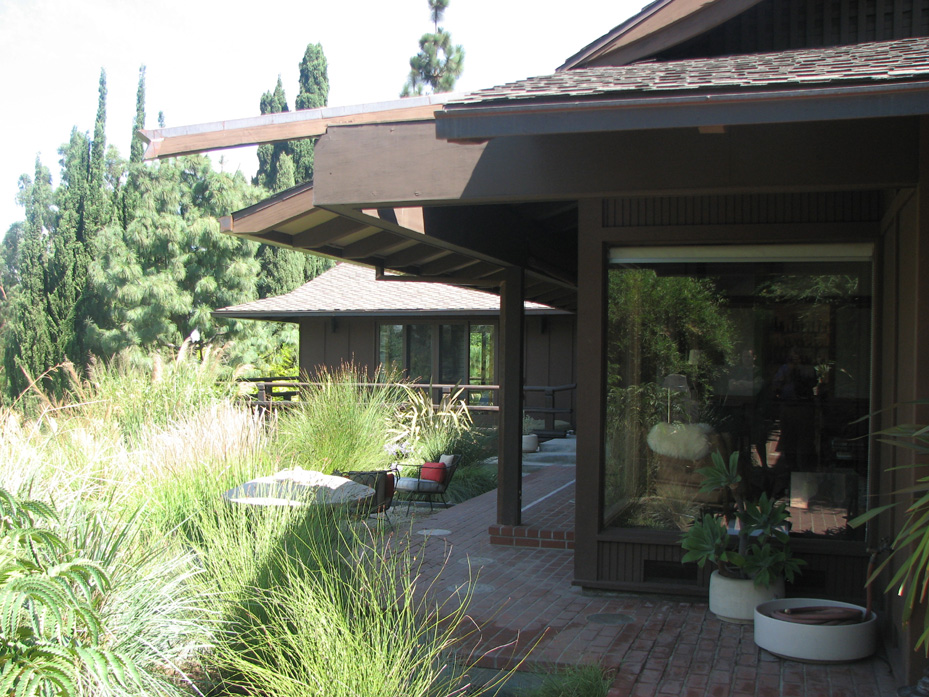
Edward A. “Tink” Adams House, Los Angeles Historic Cultural Monument #922
Built: 1966 Declared: 07/02/2008
Built in 1966 and located in the Silver Lake area, this one-story residential building exhibits character-defining features of International Style architecture with some elements of traditional Japanese architecture. The building incorporates some structural elements of a 1906 bungalow, a 1949 modernist-style garage, and a concrete rear deck. The L-shaped plan residential building has a low-pitched gabled roof with composition shingles, exposed eaves, and an off-center entrance flush with exterior wall surface. A front-facing gable with a flared roof line features an exposed roof beam with metal beam cap in a traditional Japanese-style design. The exterior is clad in wood and glass and consists of a board and batten style with vertical posts extending from base to roof between large windows. Windows consist of fixed pane, sliding and casement windows. The building is surrounded by concrete and brick decks, with a section surrounded by a partially cantilevered deck supported by angular beams and surmounted by a post and beam railing topped by a round beam. A large brick chimney with outdoor fireplace and barbeque is located at the rear. Significant interior elements include an interior lintel band and solid wood paneling. The building is surrounded by a Japanese-style garden. Secondary buildings include a garage/studio at street level and a shed at rear.
The Edward A. “Tink” Adams House historic monument was designed by architect A. Albert Cooling who died before completion. The master bedroom portion of the subject building was designed by architect James De Long in 1977. The subject building was completely redesigned and enlarged in 1966 for Edward A. “Tink” Adams and his family who purchased the property in 1942. An advertising graphics artist, Adams founded the Los Angeles Art Center School in downtown Los Angeles in 1932, later evolving into the Pasadena-based Art Center, one of the major art colleges of the nation. Adams served as President of Art Center until his retirement in 1965 and served as the Board Chairman until his death in 1981. Cooling served as an instructor at Art Center during Adams’ tenure at the college.
Alterations include the 1977 additions by De Long.